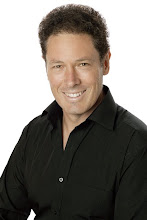There is no question that carrying excess weight is not healthy for a number of reasons. The question is what constitutes overweight? This article (see link) looks at some of the politics of obesity. It describes the background to the Body Mass Index (BMI), which derives from work done in the 1940s by insurance actuaries and work on “normal “ weight from the 1830s. The arbitrary cutoffs came from the International Obesity Task Force. All this seems a bit out of date and perhaps of questionable relevance today.
What is so special about a BMI of 25 as against 27? Many sports people are classed as overweight because they are muscle bound. Arnold Schwarzenegger was “obese” when he won Mr. Olympia. Many football players would also be technically overweight. The BMI also does not include a differentiator for men and women.
A recent study has followed over 11,000 people for 12 years and found those who were technically overweight (BMI 25-29.9) had lower death rates than those with a “normal” BMI (18.5-24.9). Now I am always suspicious of studies but whenever there is one, which challenges conventional wisdom, I am more interested. Whilst research is presented as “scientific “, to publish findings, which are against the herd, mentality is difficult.
There has been a whole industry set up to deal with the obesity “epidemic”. This includes countless jobs for health officials to set up taskforces and attend meetings. The pharmaceutical industry has tried to get on board, although with limited success as some “weight loss” pills had to be taken off the market. More recently weight loss surgery has been a winner for surgeons.
To get a drug to market requires years of development including trials to establish that the drug works and that the side effect profile is acceptable. New surgical procedures are not subject to this. The long-term effects of weight loss surgery may be only just becoming visible. Two recent reports show
increased rates of fractures and kidney stones for people in the years after surgery.
It does not surprise me that when you interfere with the absorption of food that there will eventually be consequences. Belatedly a study is being done to see if there actually are long-term benefits from weight loss surgery.
The central question in all this is what constitutes overweight and obesity. We can probably all spot it when we see it but can we define it? More importantly can one measure be applied to all people in all circumstances – the answer to that one is no.
Like most things with the body there is a “right” level above and below which there are health issues. With weight there is a level, which will impact on your health. That level may not be a BMI of 25. The likelihood is that the “correct “ BMI for most people is somewhere between 20 and 30.The other likelihood is that there are much better markers for health issues than the BMI.
As I say in my book, Dr Joes DIY Health-Putting you in charge of your health, focus on eating food that until recently was moving around or growing somewhere, food that your ancestors from 100 years ago would recognize as food, food that if not eaten would have to be thrown out next week. Following these simple guidelines will make it far more likely that your weight will be in the zone that is right for you.
http://www.ipa.org.au/publications/1409/big-fat-beat-up

